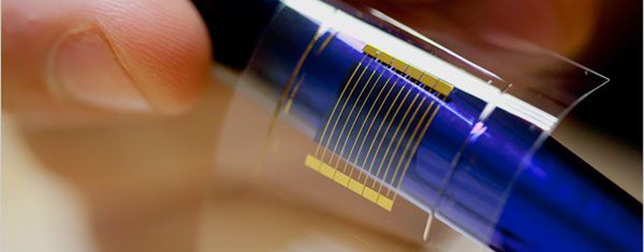In an attempt to make wearable devices lighter and more efficient for all users, a team of scientists have engineered a new solar-powered supercapacitor which can make this possible.
The scientists from the University of Glasgow’s Bendable Electronics and Sensing Technologies (BEST) group described how they came up with a new graphene supercapacitor which could be used in the next generation of wearable health sensors, in a paper published in the journal Nano Energy.
Read more Yarn Battery Could Power Smart Clothes and Wearables
The wearable devices currently in the market, use inflexible and heavy batteries, making them uncomfortable for long-term users.
The BEST team, led by Professor Ravinder Dahiya, has been working to modify their previous designs by creating a supercapacitor which could power health sensors capable of conforming to wearer’s bodies by establishing a better contact with the skin.
The supercapacitor uses layers of flexible, 3D porous foam formed from graphene and silver to create a device capable of storing and releasing around 3 times more power than any similar flexible supercapacitor, enabling it to collect more precise data, reports New Electronics.
The durability of the supercapacitor was demonstrated by the team; it showed that it provided power consistently across 25,000 charging and discharging cycles, making it very user-friendly.

The team also came up with a flexible solar-powered skin which creates an entirely self- charging system. The researchers attached a pH sensor which uses the wearer’s sweat to monitor their health.
“We are very pleased by the progress this new form of solar-powered supercapacitor represents. A flexible, wearable health monitoring system which only requires exposure to sunlight to charge has a lot of obvious commercial appeal, but the underlying technology has a great deal of additional potential,” said Professor Dahiya.
This is a breakthrough development for technologies that depend mainly on solar energy to reach remote parts of the world.
Read more Micro Batteries and Micro Molding Solutions for Your Business
The team now is thinking of expanding this idea so that flexible synthetic skin could be engineered to be used for prosthetics.
“This research could take the wearable systems for health monitoring to remote parts of the world where solar power is often the most reliable source of energy, and it could also increase the efficiency of hybrid electric vehicles. We’re already looking at further integrating the technology into flexible synthetic skin which we’re developing for use in advanced prosthetics,” concluded Professor Dahiya.












